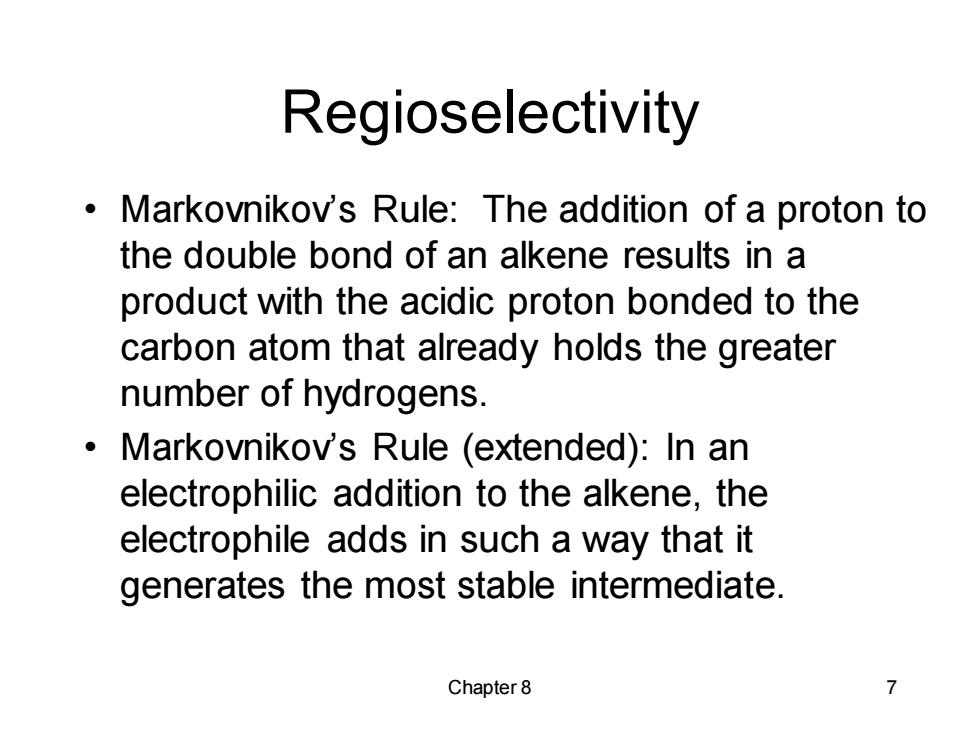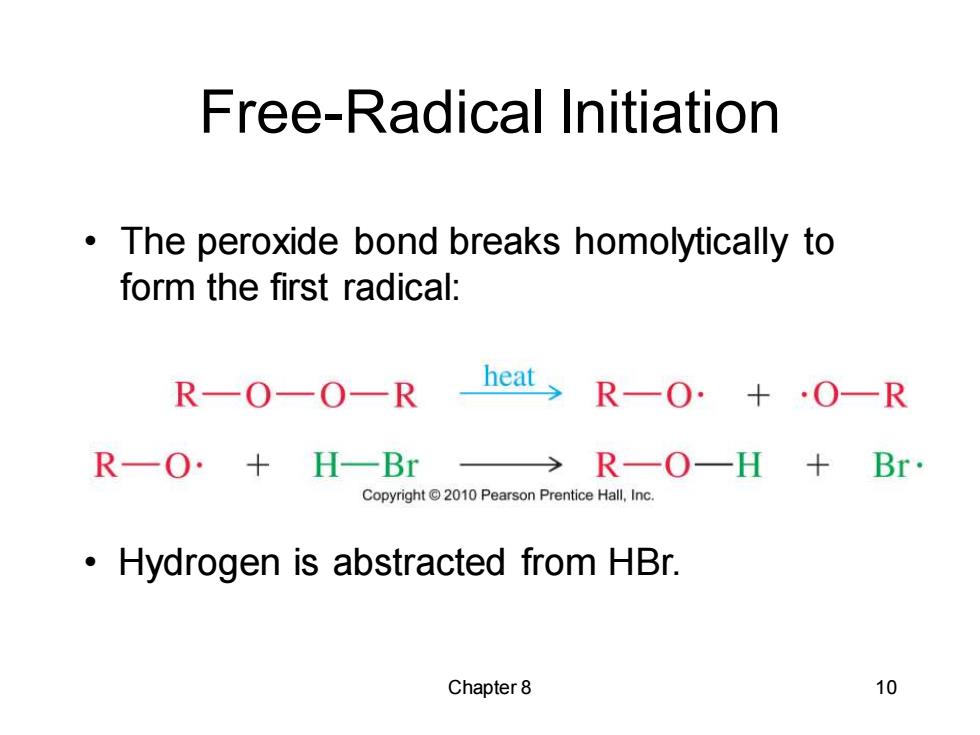
Mechanism of Addition of HX Step 1:Protonation of the double bond. HH HH CH3一CC一CH3 CH3-C-C-CH3+:Br: H-Br: H Copyright 2010 Pearson Prentice Hall.Inc. Step 2:Nucleophilic attack of the halide on the carbocation. HH HH CH3一 C一CH3+:Br CH3-C- CH H H :Br: Copyright2010 Pearson Prentice Hall,Inc Chapter 8 6
Chapter 8 6 Mechanism of Addition of HX Step 1: Protonation of the double bond. Step 2: Nucleophilic attack of the halide on the carbocation

Regioselectivity Markovnikov's Rule:The addition of a proton to the double bond of an alkene results in a product with the acidic proton bonded to the carbon atom that already holds the greater number of hydrogens. Markovnikov's Rule (extended):In an electrophilic addition to the alkene,the electrophile adds in such a way that it generates the most stable intermediate Chapter 8 7
Chapter 8 7 Regioselectivity • Markovnikov’s Rule: The addition of a proton to the double bond of an alkene results in a product with the acidic proton bonded to the carbon atom that already holds the greater number of hydrogens. • Markovnikov’s Rule (extended): In an electrophilic addition to the alkene, the electrophile adds in such a way that it generates the most stable intermediate

Markovnikov's Rule CH; CH CH3一CFCH-CH add H+to secondary carbon CH;-C-CH-CH3 HBr H Br tertiary carbocation CH, CH CH3一CCH一CH add H to tertiary carbon CH,一C-CH-CH H Br secondary carbocation Copyright2010 Pearson Prentice Hall,Inc. The acid proton will bond to carbon 3 in order to produce the most stable carbocation possible. Chapter8 8
Chapter 8 8 Markovnikov’s Rule The acid proton will bond to carbon 3 in order to produce the most stable carbocation possible

Free-Radical Addition of HBr In the presence of peroxides,HBr adds to an alkene to form the "anti-Markovnikov'product. Peroxides produce free radicals. Only HBr has the right bond energy. The HCI bond is too strong,so it will add according to Markovnikov's rule,even in the presence of peroxide. The HI bond tends to break heterolytically to form ions,it too will add according to Markovnikov's rule. Chapter 8 9
Chapter 8 9 Free-Radical Addition of HBr • In the presence of peroxides, HBr adds to an alkene to form the “anti-Markovnikov” product. • Peroxides produce free radicals. • Only HBr has the right bond energy. • The HCl bond is too strong, so it will add according to Markovnikov’s rule, even in the presence of peroxide. • The HI bond tends to break heterolytically to form ions, it too will add according to Markovnikov’s rule

Free-Radical Initiation The peroxide bond breaks homolytically to form the first radical: R-O—O—R heat> R一O·+·O一R R一O·+H一Br >R—O—H+Br Copyright 2010 Pearson Prentice Hall,Inc. Hydrogen is abstracted from HBr. Chapter8 10
Chapter 8 10 Free-Radical Initiation • The peroxide bond breaks homolytically to form the first radical: • Hydrogen is abstracted from HBr